As an eleven year old boy I started to watch horror films. Whether this had a negative influence on my psyche remains to be seen but this was really the consequence of circumstance rather than poor parenting on my folks’ behalf. It was just a really bad coincidence that the first horror film I (inadvertently) saw was among the most disturbing sci-fi horror films ever made, Event Horizon.
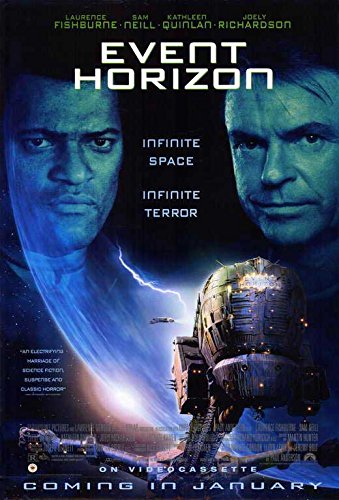
For those who know me personally, this fact may not come as a much of a surprise. Something must have happened at an early age for me to turn out the way I did (a little weird and quirky with a high endurance threshold for the innately disturbing) and admittedly Event Horizon has some incredulously messed up imagery on top of its opaquely dark themes which involve delving into the very nature of our fears.
Now, two decades after I saw it for the first time and multiple subsequent viewings, I’ve grown to appreciate both its flaws and strengths. It is not by far a perfect movie (in fact the film was plagued by multiple production-problems) but what makes the film truly horrifying is absolutely worth the watch. As a science-geek I am going to present my take on the science presented in the film and how it contributes to its impenetrably dark themes of the origin of our fears.

What makes Event Horizon such a captivating horror film (all opinions expressed are opinion based; I’m the equivalent of a sweaty nerd with a keyboard here) is that it explores the very nature of our fear; the unknown, or even in this case, the unknowable. Our fears vary from rational, where it is the result of our learned experiences and is cognitively modulated, to irrational, which is the case of phobias.
Fear is typically onset by our learned experiences through traumatic events or experiences in our lives but its capacity deep within us is an integral part of human nature. In psychology, the concept of preparedness helps explain from where this capacity for fear is begotten, from an evolutionary standpoint. It is theorized that organisms which learned to fear environmental threats faster had survival and reproductive advances. Thus fearing certain threats from our natural environment became an adaptive human trait.
This is where I need to discuss the film’s plot. Obviously spoilers are afoot.
The film opens with exposition about the conception and structure of ‘Event Horizon’, a spacecraft capable of faster-than-light travel. On its maiden voyage, however, it disappeared. Eight years later, a distress signal is detected just beyond the orbit of Neptune which is identified to be the lost Event Horizon.
First of all, traveling faster than the speed of light is theoretically possible. This feat could be achieved via an Einstein-Rosen bridge or as it is more commonly known; a wormhole. In layman’s terms, a wormhole is a tunnel with two ends, each end at separate points in spacetime, i.e. different locations or different points in time. If created, theoretically one would be able to travel from one point in the Universe to another, millions of light years away, in (say) a day. With regard to Einstein’s general theory of relativity, the concept of wormholes fully complies with the field equations involved in relativity. So what’s the catch? Why hasn’t mankind implemented this mode of transportation already?
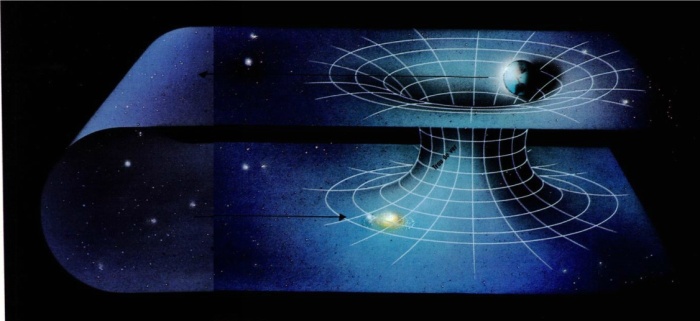
The problem with traversable wormholes is that they require exotic matter (or non-baryonic matter (or just basically imaginary stuff that violates the laws of physics)) with negative energy density to stabilize them for periods sufficiently long to allow the navigation. You may already see the problem. There is still so much conjecture involved in this stabilization and the closest scientists have come to observing anything that might be remotely relevant to our search for negative matter, is the observation of the Casimir effect. In short, the Casimir effect is an effect of quantum vacuum fluctuations between uncharged conducting plates. It describes a reduction in energy density as the plates move closer, implying that there is a small force pulling them together.
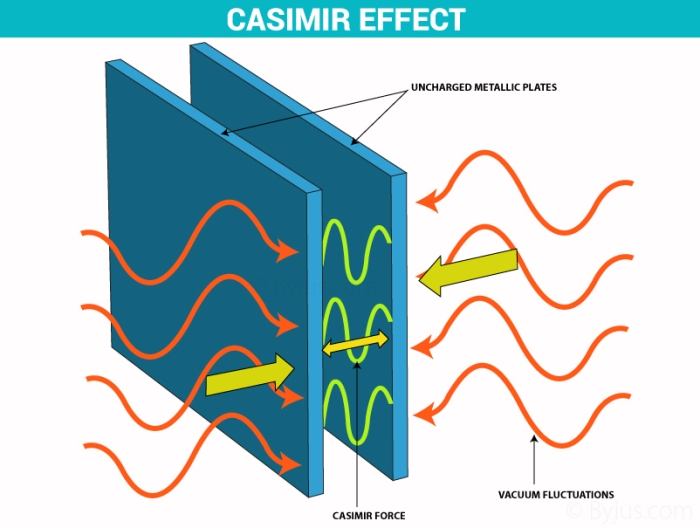
But I digress. The point is that we are a long way off of realizing this sort of interstellar travel at this time. Let’s go back to the plot.
I’ll be spoiling the majority of the plot here for those of you who haven’t seen the film. It turns out, that on its maiden voyage, the Event Horizon did not successfully manage to travel from one point to another in the Universe, but rather went into a kind of cul-de-sac which in the film is described as dimension of pure chaos; pure evil. This caused the previous members of the Event Horizon to partake in certain… activities. These include ripping their eyes out, ripping out the esophagus from a crew member’s mouth, sodomizing a crew member with a stainless steel pipe, etc. (I was eleven.)
This is all revealed later in the film of course. In the beginning of the film, however, we learn that upon its return to our Universe, the ship sends out a distress signal to Earth and Earthlings dispatch a search and rescue crew to go inspect what happened aboard the Even Horizon. As it happens, this “essence of evil” that the ship was subjected to in this (let’s just call it) other dimension, is now manifested in the ship response to the search and rescue crew. Each and every individual crew member now starts to have their deepest fears revealed via hallucinations and apparitions that mentally torture our protagonists. What is later revealed is that the ship has a distinct will about it to bring the entire search and rescue crew back to that other dimension where they can be devoured by the enrapturing chaos.
 This is a very tame screen shot from some of the graphic scenes of torturous violence depicted in the film.
This is a very tame screen shot from some of the graphic scenes of torturous violence depicted in the film.
I feel this is a good point to reflect a little bit because there is a lot of subtext to be excavated here. If we take a step back and dissect exactly what this aforementioned “evil” is, it is simply the Universe’s tendency to resolve all of its constituents to its mere primordial building blocks.
Chaos is inherently universal as I have touched upon previously in my article about Mr. Freeze’s Freezing Gun. In accordance with the 2nd law of thermodynamics, a closed system’s entropy (a statistical representation of the universal inclination towards chaos) can never decrease but only increase or remain constant. The Universe prefers chaos over order. If one were to fully characterize the Universe in the dramaturgical sense with humanity, or just living beings, as the protagonists, the Universe is certainly our antagonist. It stands staunchly against the very fabric of our being. The immense and extravagant complexities of life are a slap in the Universe’s face if you will.
With this characterization in mind, what would the Universe’s reaction be when confronted with a slew of organic molecules, delicately assembled into a functioning molecular machine that is capable of reproduction? I imagine it wouldn’t be very happy about it.
But if we take this a step further. What if these complex organisms bring themselves to the Universe’s doorstep by means of having assembled a vast quantity of the Universe’s constituents into a bigger and even more complex vehicle, utilizing even more of the Universe’s laws than those required to naturally make up their organic tissue? Again, I imagine that the Universe would be less than cordial in its approach toward these beings.
There is one more piece of scientific jargon that I would like to address here that could be of great relevance to this discussion. In the decade following the Second World War when scientists could indulge themselves yet again in unraveling the mysteries of the Universe rather than focusing their efforts towards warfare, efforts to combine the forces of nature into a singular representation of the Universe included adjoining quantum theory and the general theory of relativity. In other words, obtaining a description of the fabric of spacetime (relativity) on the smallest of scales (quantum theory). This resulted in physicist John Wheeler’s proposal of so-called quantum foam.
The concept of quantum foam is like a spatial transformation of Heisenberg’s uncertainty principle. Whereas the uncertainty principle describes the probability of finding an electron (or any other molecule or particle) within a certain region of space, the quantum foam is the smallest possible space that could be resolved. Imagine that if spacetime was a computer screen, the metrics of quantum foam would be the pixel size. The reasoning of Wheeler was along the lines that there is no reason that spacetime needs to be fundamentally smooth, but rather with a quantized version of gravity, spacetime would consist of small fluctuating regions that would resemble the protean nature of foam.
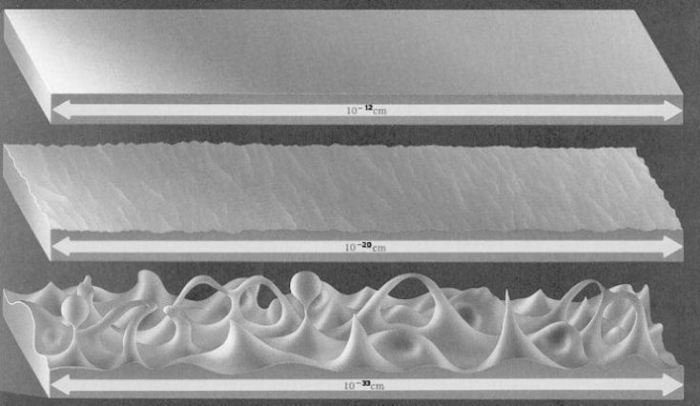
The reason why I bring up the concept of quantum foam is that it is among the many problems imposed by our current understanding of physics, which would have to be resolved in order to unlock the power of intergalactic “wormhole-ing”. Piercing the fabric of spacetime might have to involve reducing said fabric to its individual threads and hence the question arises what sort of limitations are set by this foamy nature of spacetime.
If we go now back to the Universe portraying itself as humanity’s antagonist, not only are these highly-evolved and complex organisms building giant spaceships capable of disseminating themselves around the Universe, but they are also piercing into the very fabric of the Universe’s being. By venturing into the unknown or perhaps rather, the unknowable if we refer to the resolution limitations set by the nature of quantum foam, humanity is unlocking the most primeval essence of the Universe, i.e. its propensity for ultimate chaos.
If we imagine that nothing went wrong and the Event Horizon was well on its way to entering the artificial wormhole, the Universe’s response might have been to divert the ship into another opening in its fabric; a cul-de-sac, where the crew-members are subjected to the ideals of what the Universe is; chaos. Enlightened by this vision of the Universe and our origins, the crew members start to disintegrate their souls and bodies and succumb to the pain and suffering required to fulfill the Universe’s compulsions. Our conscience, our guilt, our deep impulses to understand the Universe, our origins within it and ultimately our purpose; all become reduced to complete dissolution.
Being brought out of chaos makes our existence and life-forces quintessentially unnatural to the Universe. This aspect of the origins of our fears is an interesting one to explore. That we are created out of something that would tear us apart and inherently makes us so incomplete and guilt-ridden creatures. If you have managed to pick up a similarity with the Hellraiser films in terms of these themes, then that is no coincidence. E.g. the design of the Event Horizon gravity drive pays homage to the Hellraiser puzzle box.
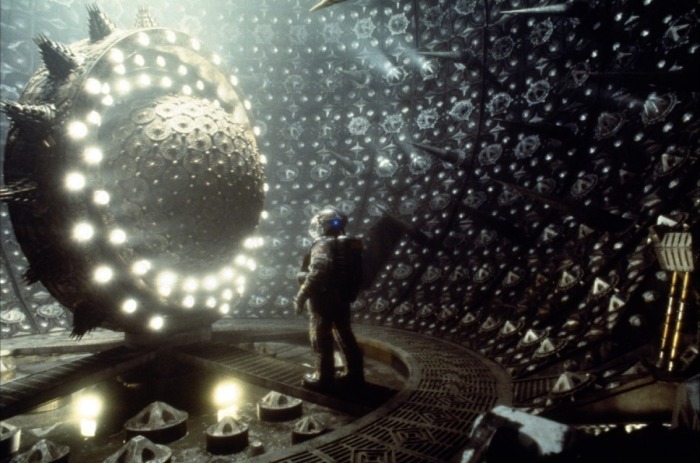
There are a lot theological and in particular Catholic themes in this film, especially in terms of the other dimension the Event Horizon stumbles into. To the crew members this is the closest depiction of hell they can imagine and for good reason. To us living beings, being disintegrated is the literal undoing of our existence. Being subjected directly to the unforgivingness of pure entropy would indeed be our cataclysmic end as living organisms.
Besides the literally hellish themes, there is a lot of religiously iconographic imagery in the film and the design of the Event Horizon itself was purposefully based on cathedrals to fit its religious themes. There are also interesting themes involving the physical removal of eyes from peoples’ sockets. Indeed Jesus said that “If your right eye causes you to sin, tear it out and throw it away. For it is better that you lose one of your members than that your whole body be thrown into hell” Matthew 5:29. Not only that, but there is also a moving thread about the absolution from our sins or at least our guilt. There are tons of these sorts of Catholic undertones which are interesting to explore and to this end I would like to point to the philosophical discussion of Event Horizon by Deadly Analysis on Youtube. It was actually this discussion that inspired me to write this article.
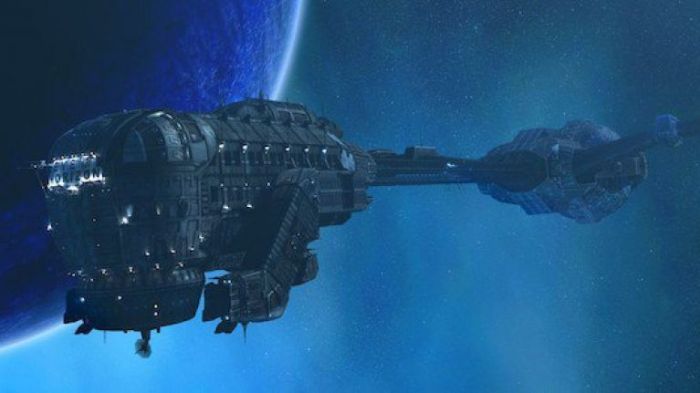
If you haven’t seen Event Horizon and the spoilers here haven’t completely repulsed you, I highly recommend checking it out. It’s disturbing but there are very interesting themes to the film that deserve the prolonged discussion about chaos as the purest form of apotheosis.

One thought on “The Science of Paul Anderson’s Event Horizon – The Science of Our Fear”